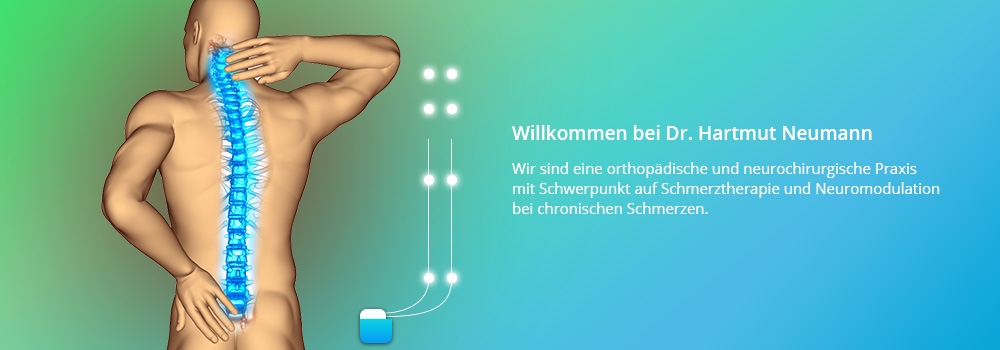Thermocoagulation
One of the tried and tested pain management therapies – the effectiveness of which has been shown by many studies – is thermal lesion, or the coagulation of the facet joints and their pain-transmitting nerves, the so-called “rami dorsali”. This is a minimally invasive procedure that is carried out under local anaesthetic either in hospital or in an outpatient setting.During thermal lesion, x-ray imaging is used to introduce a canula, which is insulated around the shaft, directly into the pain-transmitting nerve structure. A fine wire – the thermal probe – is guided through the canula. A test stimulation is then carried out to check that the probe is in the correct position. The patient feels no pain, just tingling or a slight twitching of the muscles. After the safety test has been completed, the tip of the probe is heated for 60 seconds until it reaches approx. 80 °C, so that an area the size of a grain of rice is heated up. The nerve fibre that runs through the area is obliterated in a targeted way.
As nerves are all interlinked, it is always necessary to carry out this procedure in several places along the spine so that all nerves affected can be treated. Unfortunately, this is often not carried out correctly, or is very difficult due to osteoarthritis, which is why many patients contact us for follow-up care because they are suffering from pain.
Complications are extremely rare. Injury to blood vessels cannot be ruled out completely, the consequence of which can be bleeding. Nerve damage leading to lasting paralysis is very rare. Patients occasionally experience burning nerve pain of varying intensity in the area affected, but this tends to disappear after 2-3 weeks. The possibility that the treatment will lead to chronic pain is very unlikely, but cannot be ruled out.
The anaesthetics we use during the surgery can have unwanted side effects. The effects of thermal coagulation tend to last for around 1.5 years, after which the procedure can be carried out again. Many of my colleagues charge a special payment for this method or require admission to hospital. I do not believe this to be necessary.


